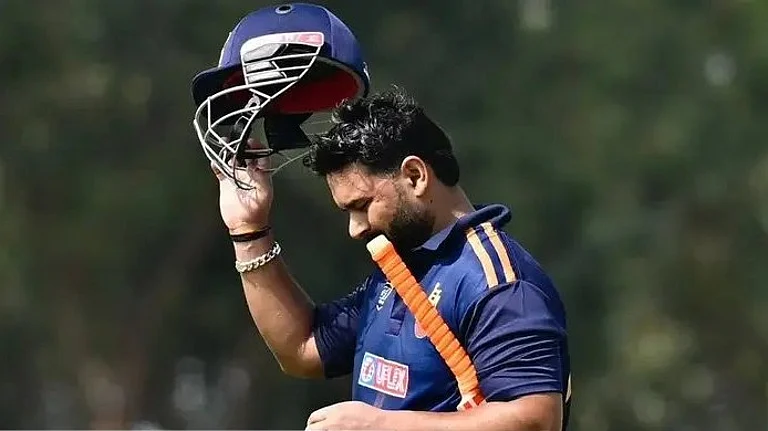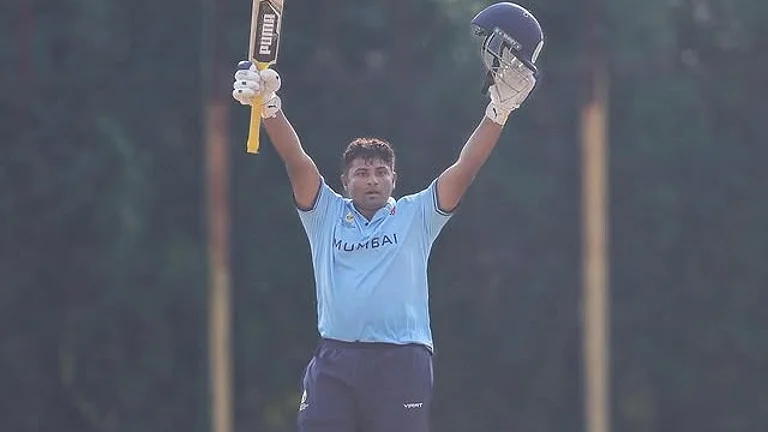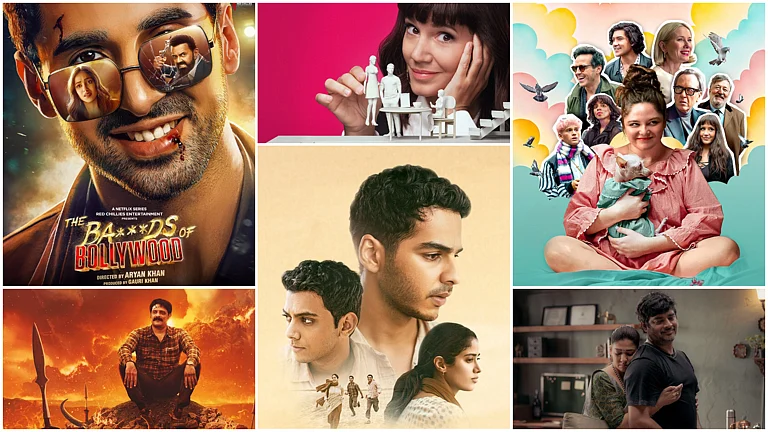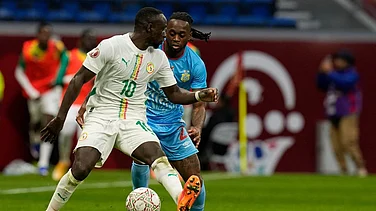Women’s sport has grown in profile and acceptance in India in recent years. The multi-crore Women’s Premier League T20, launched this year, and the emergence of female stars in various sports, like Mary Kom, Saina Nehwal, P V Sindhu, Mithali Raj and Smriti Mandhana, is proof of the improving health of Indian women’s sports.
But from the point of view of gender dynamics, men still call the shots. This is evident in the case of the wrestlers’ protest, where prominent female fighters like Sakshi Malik and Vinesh Phogat (supported by Bajrang Punia) took on the might of the Wrestling Federation of India chief, Brij Bhushan Sharan Singh. Ordinarily, it should have been a knockout win for the wrestlers, given their achievements and the seriousness of their accusations against Singh. But it is only now, after months of digging in their heels, that their grievances were properly heard by the sports minister, Anurag Thakur.
It is no surprise therefore, that at national and junior level events, girls’ sports still receives callous treatment.
A few days ago, a teenage girls’ cricket team arrived in Phulambri, Aurangabad, for a tournament. The accommodation was bare. But as long as basic necessities like clean water were taken care of, the players thought they could deal with it. Then someone reached for the tap, but there was no water. Another person tried another tap. The result was the same. None of the creaky faucets in the rooms had anything to offer to the tired girls, many of whom were having their periods. Ultimately, the players had to fetch water from a nearby well. And to think Indian cricket is flush with cash.
“I couldn’t believe it,” says Medha Patayeet, mother of Radha, one of the players on the team. Patayeet says such instances speak about the utter indifference to women’s sports, and skewed budget allocations. “The funds allocated to boys cricket are much more than girls cricket,” she says. “There is a tournament called Mahapaur Trophy, where the winning boys’ team received Rs 50,000 in prize money, and the girls got Rs 2,000-3,000,” she adds.
There was another occasion when the accommodation was not just insufficient, but insulting. It was in Kolhapur, where the girls were made to stay in a school. Ten girls were crammed into one classroom. The kit bags were piled up outside. By morning, rodents had nibbled through and snacked on items such as batting gloves. “These days you can easily get good rooms in hotels for modest prices. Kolhapur is not a village. Is a decent room for girls—in a country that is the world’s cricketing headquarters—too much to ask?” Patayeet asks.
Luckily, the Patayeets live in Pune, and are surrounded by people with civility. Radha’s coach is a former Ranji Trophy fast bowler, Prasad Kanade. He screens the tournaments and travels of the players. If any journey entails interaction with ‘creepy’ coaches or organisers, he asks the players not to go. In addition, Radha has good mentors in former women players like Soniya Dabir.
While Radha, who plays in the under-19 age group, has encountered some of the harsh realities of women’s sport in India, she has remained unscathed as yet by sexual harassment or biased selection.
Patayeet says, “One of the beliefs about Indian sport is that selection is not fair, and that you need influence to get picked. That’s not been my experience. In the case of my daughter, selection has been fair and on merit. There was even a time when a coach’s daughter was not selected, but Radha was.”
As for sexual harassment, the Patayeets have given Radha the “good touch, bad touch” talk. But they are not ones to shadow her every move. They want to empower her. “They have to learn to face the world,” says Patayeet.
She also says Radha and her teammates are strong girls, capable of fending for themselves. She narrates an amusing anecdote to illustrate this. The girls were playing a tournament in Junnar, a couple of hours from Pune. The accommodation was far from the match venue and rumoured to attract wildlife. Patayeet, who had accompanied the team on that trip, confronted one of the organisers. “You have advised the players to not venture out as there might be leopards around. Why did you put them up so far away from the ground?” The organiser replied, “Ma’am, these girls are strong enough to take on a tiger. So don’t worry about it.”
On a recent Sunday, the final of the Suhas Nadkarni Memorial Badminton tournament was taking place at MIG Club, Bandra, in Mumbai. As the players leaped and smashed their way through matches on the wooden surface of the air-conditioned court, some followed the action on a large screen set up in the hallway outside.
Sapna Bhatoye was among the parents and coaches in the hallway, which overlooked the club’s playground. Bhatoye’s daughter Naishaa, who competes in the under-17 category, is one of the rising talents of Indian badminton. She played the young Saina Nehwal in the star’s biopic. Naishaa has also appeared in a special episode of Kaun Banega Crorepati.
Naishaa’s eventful journey so far would not have been possible without the sacrifices made by her parents. Her father, Jagir Singh, quit a well-paying job in Mumbai to move to Hyderabad, where Naishaa trains at the Pullela Gopichand Academy. Mother Bhatoye holds the fort in Mumbai, working and raising their elder daughter, Jaspreet. Bhatoye travels to Hyderabad on weekends.
Watching the wrestlers’ protest is not easy for Bhatoye. Neither is it for Amar and Bhagyalaxmi Kulkarni, who too were at MIG Club, watching their daughter Vedika compete.
“I think the system has to be more supportive of the athlete. These are people who have brought major laurels for the country,” says Bhatoye. “One should be able to do things like filing an FIR (First Information Report). The wrestlers have to be given a fair trial. Naishaa and many youngsters want to play for India one day. But when they see what’s happening with the wrestlers, they may very well think, “If this is the fate of Olympic medallists, is pursuing sport worth the hassle?”
“We have been discussing the wrestling issue,” says Kulkarni. “It is shocking that these things happen even at the highest levels. You realise then that it can happen to anyone, including your own children, and you have to make them aware about it. You cannot go with them everywhere. There will be times when they will have to travel with male coaches or officials on their own. Communication and openness at home is therefore critical,” he adds.
Bhagyalaxmi’s advice for young girls is to be alert to lurking predators and invest in self-defence. “Girls need to be careful. They naturally have that sense where they can see immediately if someone is looking at them in the wrong way. They should also speak openly, and learn something like boxing or karate to be able to protect themselves. You have to be mentally strong too. We discuss cases of student suicide at home. While I understand that the life of youngsters today can be challenging, you need to remember that there are ways to overcome these problems, and therefore you have to train yourself to not crack at the first hint of trouble.”
Parents tend to be result-driven, and usually want their child to chase ambitions at all costs. Kulkarni, on the other hand, believes sport, or any vocation, is not your life if you have to pay a high price for it, such as muzzling yourself in the face of abuse. “You cannot live in the fear that if I say something, I may not get coaching, or I may not get chances. The sport is not your life,” he says.
Bhatoye is also a votary of caution and open communication. “When Naishaa goes to the changing room, I go with her,” she says. On the communication part, she says, “In today’s world, we must become friends with our children. No subject can be taboo. Gone are the days when our parents used to avoid talking to us about certain things. I tell both my daughters to tell me everything.”
The Bhatoyes travel almost 120 days a year. “I go everywhere because I see many cases [of sexual harassment or unwanted advances] and some do not come up because of shame, guilt and fear,” says Bhatoye.
She admits that Indian parents have a tendency of getting angry at their own children if something happens to them. And like Kulkarni, she too feels that parent-child communication can’t be only about marks and matches.
“Jaano ki bachche ke mann mein kya hai (listen to what’s in the child’s heart and mind). Communication cannot be only about performance and targets,” she says. On the positive side, Bhatoye feels that gender bias or stereotyping is no longer as extreme as it used to be. At the Gopichand Academy, she says, there are an increasing number of female coaches. And they push girl trainees as hard as boys. Many times, they tell girls, “If you are eating as many rotis as the boys, train as hard as them as well.”
Patayeet, however, feels gender bias still surfaces. Once, her daughter’s teammate was to take a 7 pm flight to Guwahati for a tournament. But just an hour or two before the flight, she was told she was not in the team. “When the mother’s girl protested about such last-minute changes, an official said, ‘We pick even boys’ teams at the last minute, what is a girls’ team in comparison?’” says Patayeet.
A woman sports journalist often has an empathetic and perceptive view of women’s sports, and of women in the sports industry overall. Rica Roy, sports editor, NDTV, has been on the ringside for several events over the years in India and abroad, and therefore, has an informed take on the subject of women in sport. Sexual harassment, she feels, is common, especially among athletes who come from underprivileged backgrounds, whose families are simply not educated enough or have the means to take action against perpetrators of abuse.
“A majority of Indian sportspersons come from rural India. The girls do not talk about it (sexual harassment) because they do not want to risk their careers. And their parents are not educated enough to give them support,” says Roy. “There are several sports administrators, coaches and even sponsors taking advantage of these vulnerable women, sometimes in exchange for promises.” However, Roy feels things are changing when it comes to condescending attitudes towards female athletes or even female sports journalists. “It is usually difficult for a man to take women seriously; this is true with sports reporting too,” says Roy. “But it is changing. I am seeing two generations after me and there is a tangible change.”


























